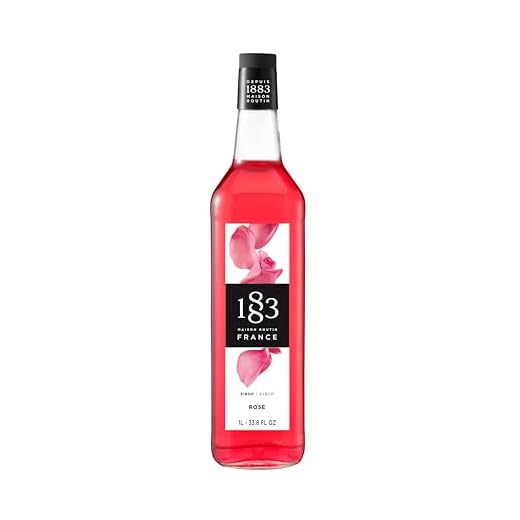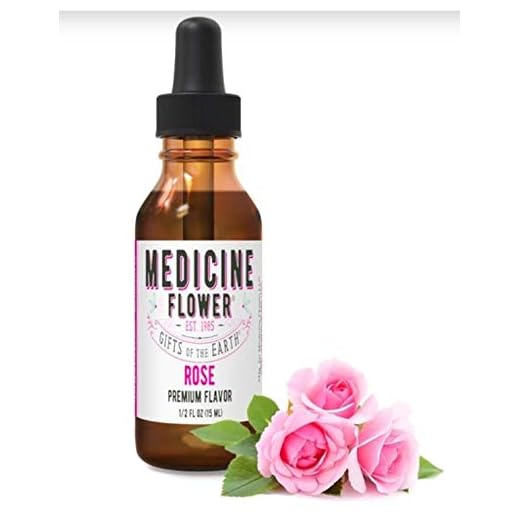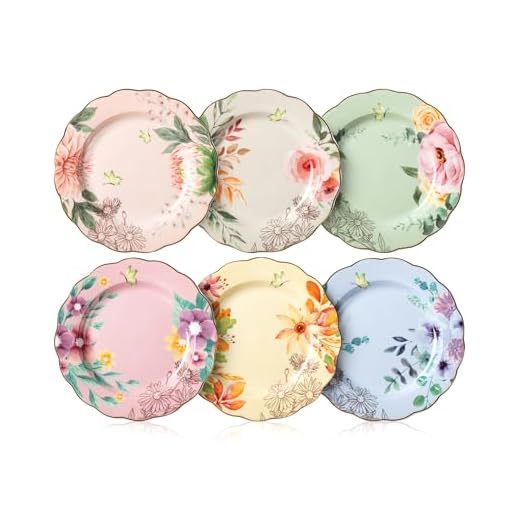



For a truly captivating culinary experience, consider incorporating the essence of blossoms into your dishes. This aromatic profile can elevate not only desserts but also savory plates, offering a unique twist that tantalizes the palate. To start, look for high-quality extracts or culinary-grade petals that can be infused into syrups, creams, or even vinaigrettes.
Pairing these delicate notes with complementary ingredients is key. For instance, infuse creams with petals to create a fragrant whipped topping for pastries or blend them into salad dressings for an unexpected flavor burst. When experimenting, remember that less is often more; a few drops of extract can transform a dish without overwhelming it.
Additionally, sourcing fresh varieties from local markets can enhance the authenticity of your creations. Always ensure that the blossoms are specifically cultivated for culinary use to avoid any potential bitterness or toxicity associated with ornamental types. This attention to detail will ensure that your dishes not only taste exquisite but also resonate with the vibrant essence of nature.
Understanding the Essence of Floral Notes
To appreciate the unique characteristics of floral notes, it’s vital to explore their aromatic profile, which can evoke memories and emotions. The scent often carries a sweet, delicate quality reminiscent of freshly bloomed petals. This essence can be found in various culinary applications, from desserts to savory dishes, enhancing overall taste and complexity.
When incorporating these aromatic elements into your cooking, consider using natural extracts or infusions to capture that distinctive quality. For instance, combining it with citrus or herbal ingredients can create a balanced profile that pleases the palate. Always start with a small amount, as these aromas can be potent and easily overpower other flavors.
Pairing this essence with beverages can elevate the experience, whether it’s a light white wine or a refreshing cocktail. This interaction between the dish and the drink should complement each other, enhancing the overall enjoyment. If you’re curious about how different ingredients interact, check out this link for more information on how long does it take to cook field peas.
Experimenting with these floral notes can lead to delightful discoveries in your culinary journey. Always trust your palate and enjoy the process of exploration.
Understanding the Chemical Composition of Rose Flavor
To truly appreciate the essence of this aromatic experience, one must examine the key compounds responsible for its distinctive profile. Major constituents include geraniol, citronellol, and phenyl ethyl alcohol, which contribute to the sweet, floral notes. Additionally, various aldehydes and esters play a significant role in creating the complexity that can be detected in different varieties.
Key Compounds
Geraniol, a monoterpenoid, imparts a fresh, rosy scent. Citronellol adds a citrusy undertone, while phenyl ethyl alcohol brings about a honey-like sweetness. These components can vary based on the cultivation methods and environmental conditions, leading to unique aromatic outcomes.
Influence of Terroir
The geographical origin influences the chemical makeup. Factors such as soil composition, climate, and cultivation practices can enhance or diminish specific compounds. Understanding these variations can aid in selecting the right product for culinary or perfumery applications, ensuring the desired aromatic profile is achieved.
Common Culinary Uses of Rose Flavor in Cooking
Incorporating the essence of petals into your dishes can elevate both flavor and presentation. Here are some common applications:
- Desserts: Infuse pastries, cakes, and ice creams with essence for a fragrant touch. Adding a few drops of rosewater to whipped cream or custard creates an aromatic dessert base.
- Middle Eastern Cuisine: Incorporate into classic dishes such as baklava or rice pudding. The sweet notes complement nuts and spices beautifully.
- Beverages: Enhance teas, lemonades, and cocktails. A splash of rose syrup transforms a simple drink into a floral delight.
- Marinades and Sauces: Experiment with dressings and marinades for meats or salads. A hint of floral notes can balance savory elements.
- Jams and Preserves: Create unique spreads by mixing petals with fruits like strawberries or apricots. The combination results in a fragrant and flavorful preserve.
Experimenting with the essence of petals allows for creativity in both flavor and visual appeal, making any dish more inviting. Always start with a small amount, as the aroma can be quite potent.
The Role of Rose Essence in Perfume and Fragrance Industries
Incorporating floral notes, particularly those derived from this beloved bloom, is a key strategy for achieving complexity in scents. This ingredient serves as a cornerstone in both high-end perfumes and mass-market fragrances. Its captivating aroma not only provides a romantic allure but also enhances the overall scent profile, making it more appealing to a broader audience.
Utilizing various extraction methods, distillers can create different products, each offering distinct characteristics. The two most common forms used in perfumery are rose absolute and rose essential oil. Rose absolute is extracted through solvent extraction, resulting in a rich, concentrated essence that captures the full depth of the bloom’s aroma. Essential oil, on the other hand, is produced via steam distillation, yielding a lighter, more volatile scent that can be used effectively in various formulations.
In fragrance composition, this element is often paired with notes such as citrus, spices, or woods to create balance and depth. The interplay between these components can evoke specific emotions, making perfumes not just a product, but an experience. For instance, blending with citrus can impart freshness, while coupling with warm spices can add a sense of comfort and warmth.
Market trends indicate a growing consumer preference for natural ingredients, prompting brands to explore organic and sustainably-sourced options. This shift not only aligns with eco-conscious consumer values but also enhances the storytelling aspect of the product. Brands that highlight the origins and production methods of their floral components tend to resonate more with discerning customers.
| Type of Extraction | Characteristics | Common Uses |
|---|---|---|
| Rose Absolute | Rich, complex aroma | High-end perfumes, luxury fragrances |
| Rose Essential Oil | Lighter, more volatile scent | Home fragrances, aromatherapy, personal care products |
As a seasoned professional in the field, I emphasize the importance of understanding how this floral essence interacts with other components in fragrance formulations. The knowledge of how various notes blend and evolve over time is crucial for creating a well-rounded product that captivates and retains the consumer’s interest.
The future of this ingredient in the fragrance industry looks promising, with innovations in sustainable sourcing and extraction techniques paving the way for new possibilities. As consumers continue to seek authenticity and quality, the role of this exquisite bloom in perfumery will undoubtedly remain significant.
Health Benefits Associated with Consuming Floral Essence
Incorporating this aromatic infusion into your diet can enhance wellness in multiple ways. It is known to possess antioxidant properties that combat oxidative stress, promoting cellular health. Regular consumption may improve digestion by alleviating gastrointestinal discomfort, thanks to its soothing qualities.
This botanical extract also supports emotional well-being. Its fragrance has been linked to reduced anxiety and stress levels, creating a calming effect that can enhance overall mood. Incorporating it into teas or desserts can provide mental clarity and relaxation.
Moreover, the infusion is rich in vitamins and minerals, particularly vitamin C, which boosts the immune system. This can be particularly beneficial during seasonal changes when susceptibility to illness increases.
For skincare, topical application or consumption can help maintain healthy skin due to its anti-inflammatory characteristics. This may reduce redness and irritation while promoting a radiant complexion.
Incorporating this essence into your culinary practices not only enhances flavor but also contributes to your health, making it a delightful addition to a balanced lifestyle.
How to Create Rose Flavor at Home: A Step-by-Step Guide
To capture the essence of blossoms in your kitchen, begin with fresh petals. Choose organic varieties to avoid pesticides. Gather approximately one cup of petals, ensuring they are vibrant and fragrant.
Infusion Method
Place the petals in a pot and cover with water. Use just enough to submerge them. Heat gently until the water simmers, then reduce to low and let steep for about 20-30 minutes. Strain the mixture through a fine sieve or cheesecloth, discarding the solids. This liquid serves as a natural extract.
Enhancing the Extract
To intensify the taste, consider adding sugar or honey. Combine equal parts of the extract and sweetener in a saucepan. Heat until the sweetener dissolves completely, creating a syrup. Cool the mixture before storing it in a glass container in the refrigerator. This syrup can be used in beverages, desserts, or as a flavoring agent.
Experimenting with drying petals is another avenue. Spread fresh petals on a baking sheet and place them in an oven at the lowest setting, allowing them to dry out completely. Once dried, grind them to a fine powder for use in baking or as a decorative garnish.
Identifying Quality Rose Flavor Products in the Market
To select high-quality products infused with the essence of blossoms, focus on the following criteria:
- Ingredients: Check the label for natural ingredients. Avoid items with artificial additives or synthetic compounds.
- Source: Opt for products sourced from reputable farms known for their cultivation practices. Organic origins can enhance quality.
- Extraction Method: Look for extracts obtained through steam distillation or cold pressing, which retain more authentic characteristics.
- Color and Aroma: Quality extracts should possess a vibrant hue and a strong, pleasant aroma. Discoloration or a weak scent may indicate inferior quality.
- Taste Profile: Sample products to assess the taste. A well-balanced profile should be floral, with a touch of sweetness and no overpowering bitterness.
- Packaging: Choose items in dark glass containers to protect against light degradation, which can affect flavor integrity.
- Brand Reputation: Research brands for customer reviews and industry awards. Trusted brands often prioritize quality.
To further ensure quality, consider purchasing from specialty shops or direct from producers. This can provide insight into the product’s origins and production methods. Sampling different varieties can also help refine your palate and improve your ability to identify superior options. Keep a tasting journal to record your experiences and preferences.
Always stay informed about seasonal variations and emerging producers, as quality can fluctuate based on harvest conditions and production techniques. Engaging with communities that share similar interests can enhance your knowledge and appreciation of these delightful ingredients.
Pairing Floral Essence with Other Ingredients for Enhanced Taste
For a delightful culinary experience, combine the aromatic essence with citrus fruits like lemon or orange. The bright acidity of these fruits balances the floral notes, creating a refreshing profile perfect for desserts and beverages.
Incorporating nuts such as pistachios or almonds can add a rich, buttery texture that complements the delicate notes beautifully. A sprinkle of crushed nuts over a dish infused with this essence enhances both flavor and presentation.
Spices like cardamom or cinnamon can elevate the complexity of your dish. A pinch of ground cardamom in a dessert can add warmth, while cinnamon can enhance the sweet profile in pastries and ice creams.
Pairing with dairy products such as yogurt or cream creates a luxurious mouthfeel. The creaminess of these ingredients can soften the intensity of the floral notes, making them more approachable in both sweet and savory dishes.
Green herbs like mint or basil can introduce a refreshing contrast. A simple salad drizzled with a floral-infused vinaigrette and topped with fresh herbs can provide an unexpected yet delightful twist.
Lastly, consider integrating this essence with dark chocolate. The bitterness of high-quality chocolate can create a sophisticated balance, perfect for desserts or gourmet truffles.











